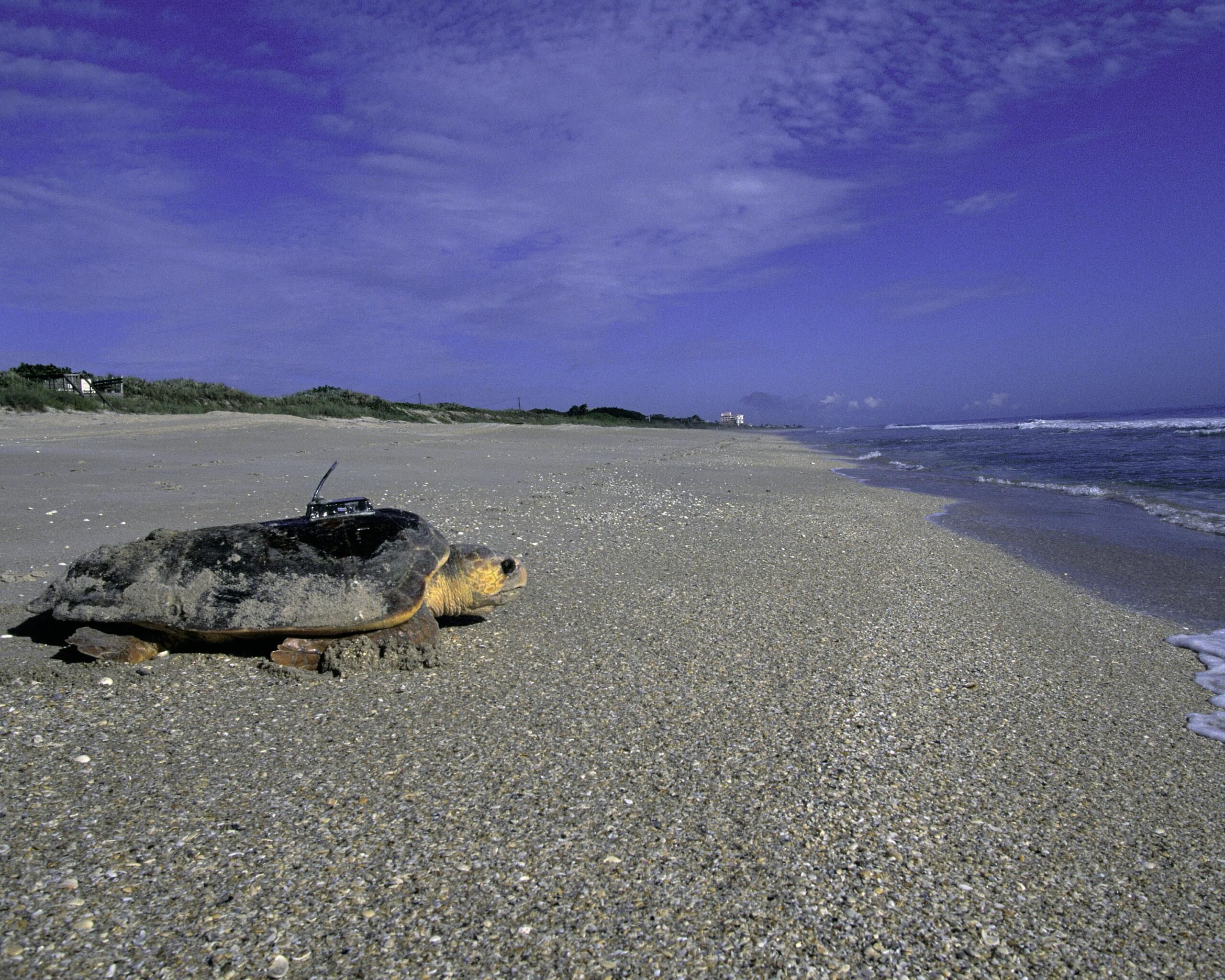Plan Won’t Stop Slide of Leatherback Sea Turtle Toward Extinction
JANUARY 5, 2004—The California based environmental organization Sea Turtle Restoration Project compliments the “Northeast Distant Fishery Sea Turtle Bycatch Reduction Project” announced yesterday by the US National Oceanic and Atmospheric Administration (NOAA) as a move in the right direction to solve the problem of sea turtle bycatch. However, the plan itself will not stop the slide of the leatherback sea turtle toward extinction.
Despite the development of a “circle” hook (which features a slight adjustment in the angle of of a “J” hook), a change in bait from squid to mackerel and the development of a “leatherback lift,” the new plan will have little impact on leatherback sea turtles. According to Robert Ovetz, Ph.D., a Marine Species Campaigner with the Sea Turtle Restoration Project, “changes that longliners employ as a result of the study will not affect the continuing decline of the Pacific leatherback whose female nesting population has been estimated to have declined by 95% in the past two decades.”
Furthermore, as is shown in the NOAA’s own video “Leatherbacks Aboard” at http://www.nmfs.noaa.gov/mediacenter/turtles/, leatherbacks are mostly caught on their flippers by longline hooks and will be unaffected by the new bait since they feed on jellyfish not squid or mackerel. Todd Steiner, Executive Director of the Sea Turtle Restoration Project explains that “it is unclear from the NOAA report how much such a lift will cost, who will pay for it, if it will be mandated for all US longline vessels, and if there will be enforcement to ensure that it is actually used.”
Most importantly, NOAA estimated a reduction in leatherback bycatch of 70%. “Although this study may help reduce turtle bycatch, the achievable reduction is inadequate for protecting the plunging Pacific Leatherback population. These new techniques are insufficient to fulfill guidelines for reducing bycatch rates to ‘levels approaching zero’ for endangered sea turtles,” says Ovetz. “Any incidental take of leatherbacks is detrimental to their continued survival. The only way to protect the leatherback is to maintain the closures to longline fishing in US waters of the Atlantic and Pacific not reduce bycatch related restrictions as NOAA is recommending.” The Sea Turtle Restoration Project is also currently advocating a UN moratorium on longline fishing in the Pacific.
Finally, the project does little to protect consumers of fish from high levels of methylmercury in tuna and swordfish, which are caught by longline fishing. The FDA issued a warning that “swordfish, shark, king mackerel and tilefish (also known as golden snapper) contain enough mercury to affect the central nervous system and harm developing fetuses. Pregnant and nursing women, women who might become pregnant and young children should not eat these fish.”
“The NOAA project would encourage an intensification of longline fishing by opening currently closed longline tuna and swordfish fisheries thereby further endangering both endangered sea turtles and seafood consumers,” warns Ovetz. “Both sea turtles and consumers would suffer in order to keep longliners afloat in our waters.”
The Sea Turtle Restoration Project is currently working with the State of California to ensure the proper posting of mercury warnings at all supermarkets in the state required under Proposition 65 to further protect consumers from mercury and sea turtles from deadly longline fishing.




